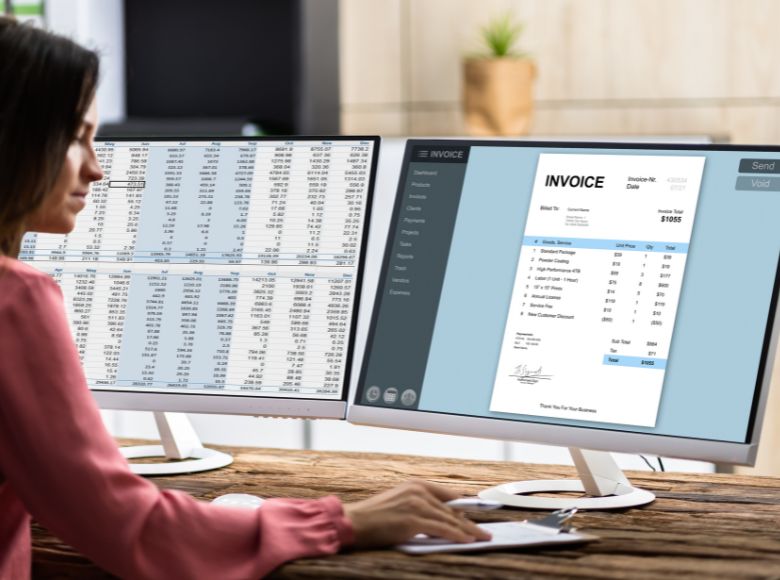A well-structured Accounts Payable (A/P) process ensures timely payments, accurate financial records, and effective cash flow management.
Vendor Management and Setup
- Objective: Establish and maintain accurate and up-to-date vendor records.
- Vendor Onboarding: Collect and verify necessary documentation from vendors, including W-9 forms, contact information, and banking details.
- Vendor Approval: Ensure that the vendor meets company standards and compliance requirements. Obtain internal approval before entering the vendor into the system.
- Vendor Setup in ERP System: Enter the vendor details into the ERP system or accounting software. Assign vendor codes for easy tracking.
- Contract Management: Upload and maintain vendor contracts, agreements, and terms of payment in the system.
- Impact: Proper vendor setup reduces errors in payments, minimizes compliance risks, and ensures accurate financial reporting.
Invoice Receipt and Verification
- Objective: Ensure that all vendor invoices are accurate and match the agreed-upon terms.
- Invoice Receipt: Receive invoices via mail, email, or electronic data interchange (EDI). Log the receipt date.
- Invoice Matching: Match the invoice with the corresponding purchase order (PO) and receiving report (3-way matching). Verify quantities, prices, and terms.
- Invoice Approval: Route the invoice for approval to the relevant department or manager. Ensure that the approval follows the company’s hierarchy and authority matrix.
- Impact: Accurate invoice verification helps avoid overpayments, duplicates, and fraud, improving overall financial control.
Data Entry and Coding
- Objective: Ensure accurate recording of expenses in the general ledger.
- Invoice Data Entry: Enter invoice details into the accounting system, ensuring accuracy in date, amount, vendor, and description.
- GL Coding: Assign general ledger (GL) codes to the invoice based on the nature of the expense. This step is critical for accurate financial reporting and analysis.
- Impact: Proper coding ensures that expenses are recorded in the correct accounts, which is essential for accurate financial statements and budgeting.
Payment Processing
- Objective: Ensure timely and accurate payment to vendors.
- Payment Scheduling: Schedule payments based on the vendor’s payment terms (e.g., Net 30, Net 60). Optimize payment timing to maintain cash flow.
- Payment Approval: Obtain necessary approvals for the payment batch according to company policy.
- Payment Execution: Process payments via check, ACH, or wire transfer. Ensure payments are processed on or before the due date to avoid late fees.
- Impact: Timely payments improve vendor relationships and can result in early payment discounts, which positively impacts cash flow.
Exception Management
- Objective: Handle discrepancies and errors in the A/P process efficiently.
- Identify Exceptions: Regularly review invoices, payments, and vendor statements to identify discrepancies (e.g., unmatched invoices, incorrect amounts).
- Resolve Discrepancies: Communicate with the vendor or internal departments to resolve discrepancies. Document the resolution process.
- Escalation Process: If the issue cannot be resolved at the operational level, escalate it to higher management for further action.
- Impact: Effective exception management reduces financial discrepancies and prevents issues from escalating into larger problems.
Statement Reconciliation
- Objective: Ensure that A/P records match vendor statements and resolve any discrepancies.
- Monthly Reconciliation: Reconcile A/P sub-ledger with vendor statements at the end of each month.
- Discrepancy Investigation: Investigate and resolve any discrepancies between the A/P records and the vendor statement.
- Adjustment Entries: Make necessary adjustments in the accounting system to correct any errors identified during reconciliation.
- Impact: Regular statement reconciliation ensures the accuracy of financial records and prevents issues such as overpayments, missed payments, and unrecorded liabilities.
A well-managed A/P process maintains strong vendor relationships, provides accurate financial reporting, and effective cash flow management. According to a study by The Hackett Group, companies with efficient A/P processes can achieve cost reductions of up to 60% compared to those with less efficient systems. Conversely, poor A/P management can lead to financial inaccuracies, strained vendor relationships, and missed opportunities for discounts, all of which negatively impact a company’s bottom line .

